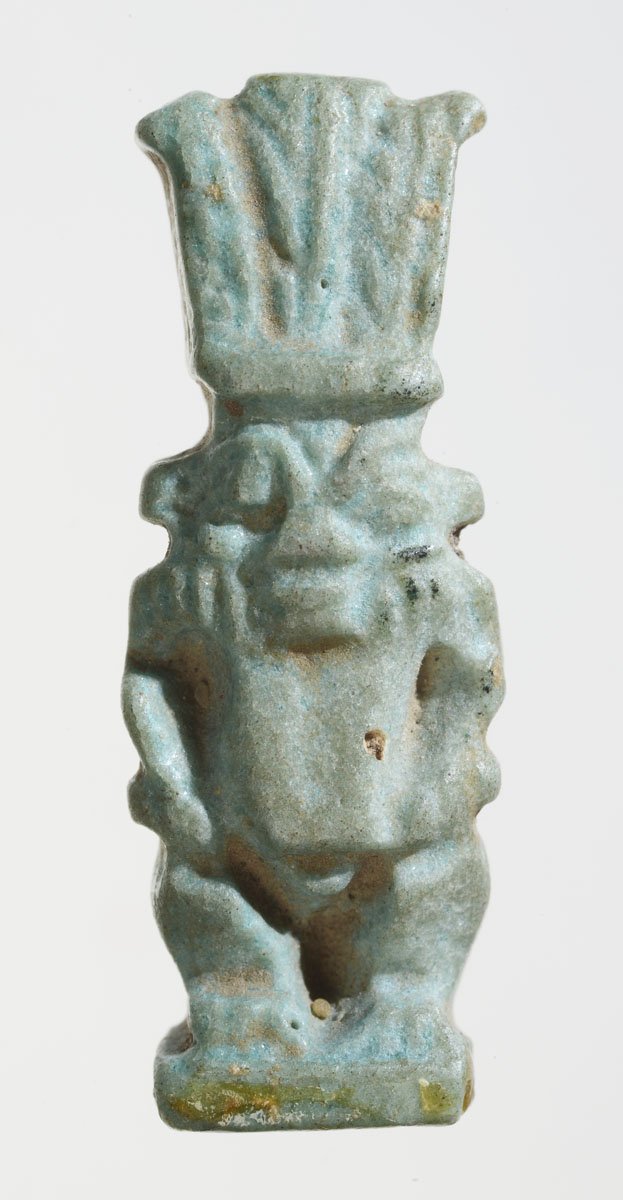
Amulet of the Dwarf-God Bes
Egyptian Art
| Date | 7th–3rd centuries BC |
|---|---|
| Object type | religious or cult object |
| Medium, technique | limestone, carved and painted |
| Dimensions | 9.2 x 7.4 x 2.7 cm (3 5/8 x 2 15/16 x 1 1/16 in.) |
| Inventory number | 77.123-E |
| Collection | Egyptian Art |
| On view | This artwork is not on display |
The rectangular limestone plaque depicts a frontal nude female standing in a niche of an Egyptian-type shrine in raised relief. The figure is schematically rendered, her legs are tightly closed. She holds her disproportionately long arms tightly by her body and the palms of her hands on the thighs, almost at the height of her knees. She wears a square-cut wig to the shoulders; her breasts and the pubic triangle are plastically emphasised. The back slab takes the form of a small shrine or chapel with open door wings. The lintel and the moulding are damaged on the right; most of the cavetto cornice is broken off. A horizontal cutting runs across the left side of the plaque as an extension of the ground floor. Traces of reddish paint scattered across the surface.
Figure plaques of this type in limestone or terracotta first emerged and became widespread in Lower Egypt in the late Saite or Persian Periods but were also produced in large numbers in the early Ptolemaic Period. They vary considerably with regard to size, the shape of the plaque, and the position of the female who, in certain cases, seems to be accompanied by a child or appended by objects of various kinds, such as wine amphorae. Some pieces display even more explicit imagery associated with women, childbirth, and fertility by including lotus or palm columns with Bes or Hathor capitals or a headdress identifying the female figure as Isis-Hathor. It can be argued that they developed from the New Kingdom and the Third Intermediate Period moulded terracotta plaques depicting nude females reclining on a bed, through the reinterpretation of the back slab as a chapel or a shrine. However, beyond the indigenous Egyptian tradition, their iconography also reflects external influences by incorporating features of the Phoenician Astarte plaques or later Greek female figure plaques, suggesting that in a culturally diverse society, nude female figurines might have been used in different contexts for different purposes.
This record is subject to revision due to ongoing research.